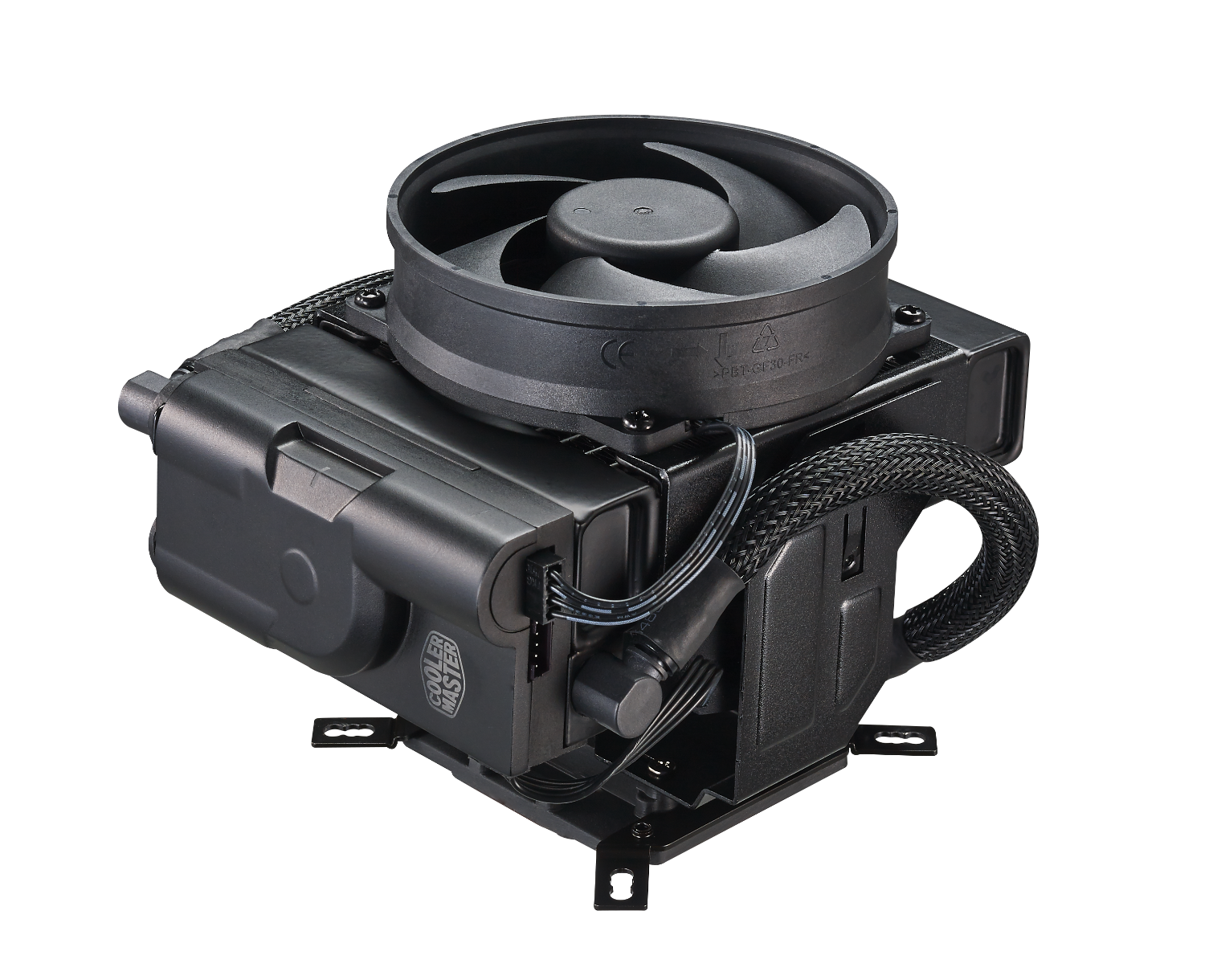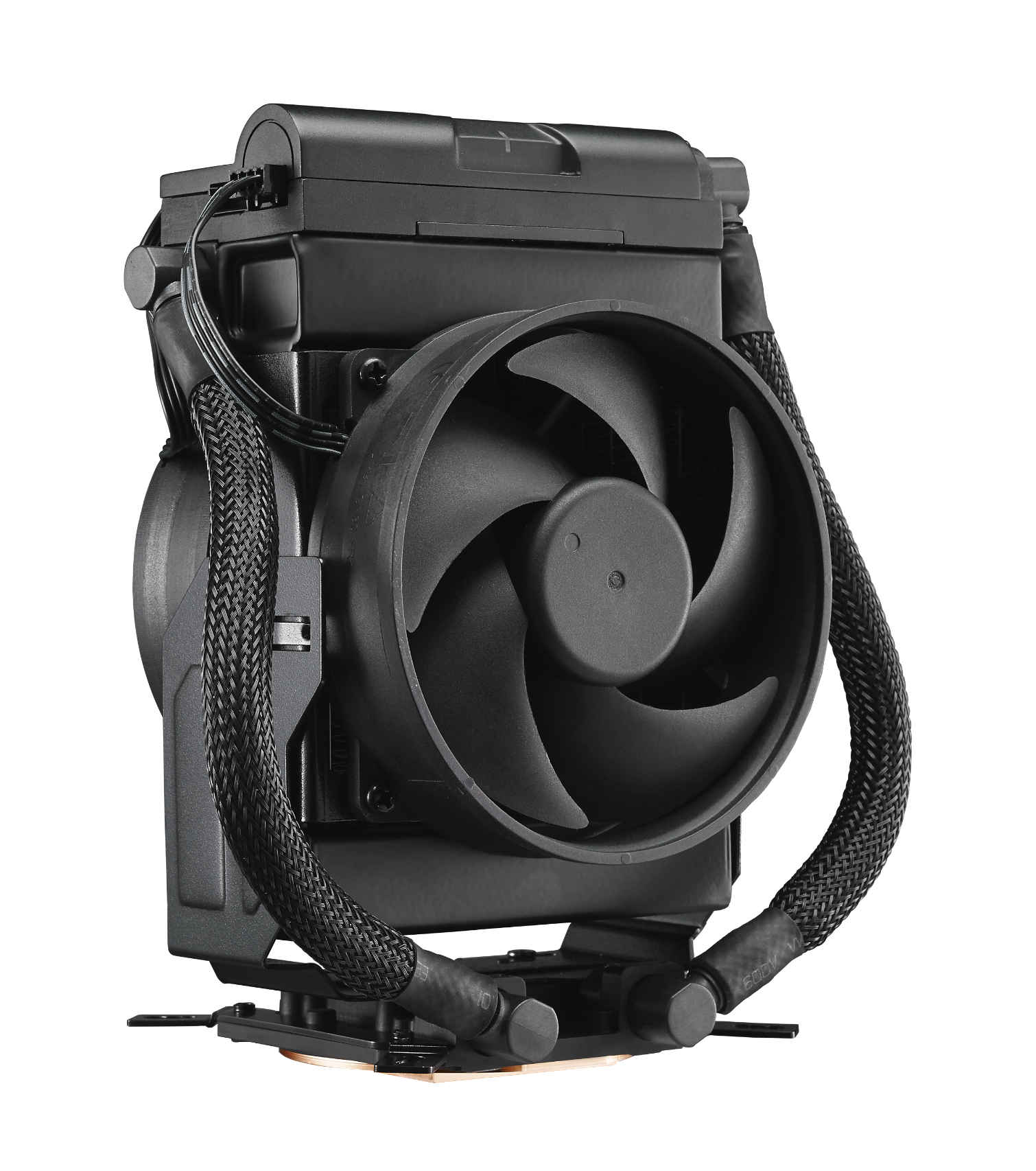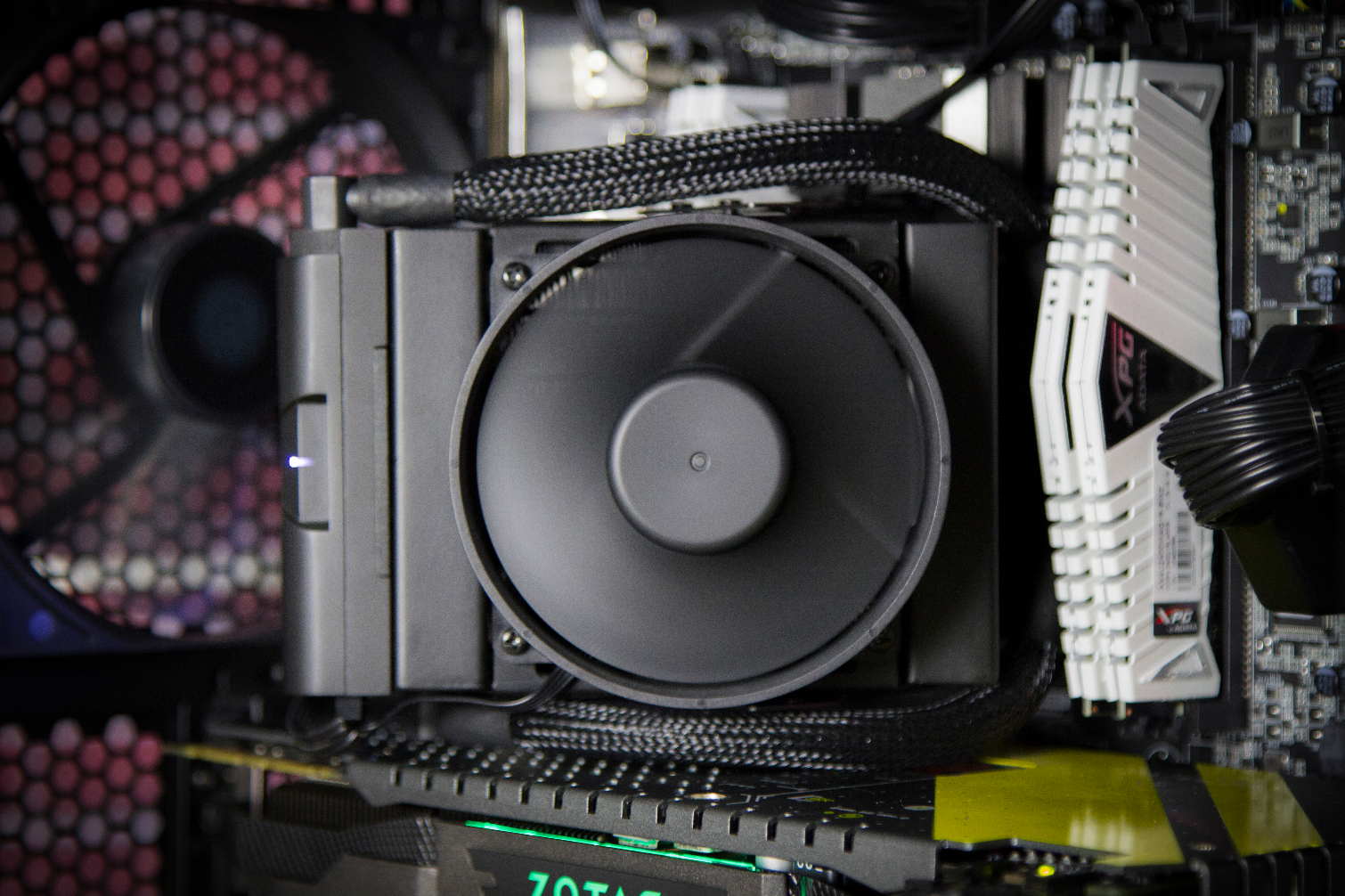Cooler Master’s MasterLiquid Maker 92 Offers Closed Loop Cooling With Heatsink Footprint
Cooler Master went back to the drawing board and reinvented the closed loop cooler. The MasterLiquid Maker 92 is a liquid cooler designed to fit the profile of a traditional CPU air cooler.
If you’re in the market for a high-end overclockable CPU, there’s a good chance you’re considering a liquid cooling solution. Traditional liquid cooling systems are cumbersome and really only meant for enthusiasts with a desire for the best of the best. Closed loop cooling solutions, such as Cooler Master’s Seidon, Nepton and MasterLiquid Pro series, have been gaining popularity in recent years, but juggling a CPU block and a radiator during installation isn’t for everyone.
Cooler Mater took a new approach with the MasterLiquid Maker 92. The cooler is technically still a closed loop cooler, but the entire loop is enclosed in a package small enough to mount directly to your motherboard like a traditional air cooler.
The MasterLiquid Maker 92 includes a low profile CPU block with a small 92mm radiator mounted directly above it. The pump from the MasterLiquid Maker 92 is mounted directly to the radiator, and two small tubes complete the loop. The compact radiator is cooled by dual 92mm fans.
Cooler Master designed the MasterLiquid Maker 92 to accommodate a wide range of cases and builds. The radiator sits on a swivel that can be adjusted at any time. The cooler can sit vertically inside a large case, or the radiator can sit horizontally for compact mini-ITX builds. Cooler Master said that the horizontal orientation has the added benefit of blowing air directly over the motherboard and cooling its components.
The Cooler Master MasterLiquid Maker 92 closed loop cooler will be available in September. Cooler Master will be accepting pre-orders for a limited number of units on August 30. You have to sign up for the CM Fanzone to get the details.
| Header Cell - Column 0 | Cooler Master MasterLiquid Maker 92 |
|---|---|
| CPU | Intel LGA 2011-v3/ 2011/ 1151/ 1150/ 1155/ 1156 socket |
| Power Connector | SATA and 4-Pin |
| Radiator Material | Aluminum |
| Vertical Dimensions | 99.9 x 81.6 x 167.5mm (3.9 x 3.2 x 6.6”) |
| Horizontal Dimensions | 99.9 x 142 x 118.8 mm (3.9 x 5.6 x 4.7”) |
| Fan Dimensions | 95 x 25.4 mm (3.7 x 1”) |
| Airflow | 49.7 CFM (max) |
| Air Pressure | 6.4 mmH2O (max) |
| Noise Level | 30 dBA (max) |
| MTTF | 350,000 hours |
| L-10 Life | 50,000 hours |
| Rated Voltage | 12 VDC |
| Pump Noise Level | <12 dBA (max) |
| MTTF | 175,000 hours |
| L-10 Life | 50,000 hours |
| Rated Voltage | 12VDC |
| Warranty | 5 Years |
Get Tom's Hardware's best news and in-depth reviews, straight to your inbox.
Kevin Carbotte is a contributing writer for Tom's Hardware who primarily covers VR and AR hardware. He has been writing for us for more than four years.
-
bak0n No pricing data yet? This could be useful in my prodigy case to allow me to keep my blue ray player I'm thinking.Reply -
bgunner One stat that is missing is weight. AIO's and open loop cooler's weight is not supported around the CPU socket giving it a major advantage. Toms here should try to get there hands on one of these and test it's cooling effectiveness and how much it can actually cool the board.Reply -
jjbtexas is a 92mm radiator really going to be efficient enough at cooling compared to an air cooler of similar size? what makes watercooling so useful is that you can take the heat away from it's source and then spread the heat dissipation out across a large cooler. while i'm sure 92mm is enough to keep a chip cool, it won't do nearly as well as a 120 or bigger. I wouldn't be surprised if a similarly sized air cooler is more efficient.Reply -
WFang I thought the main advantage of liquid cooling was efficient heat transport to a location where a larger radiation area could be leveraged to increase performance and/or decrease the sound profile of the cooling solution?Reply
Squeezing this into the same form-factor as a regular "heat-pipe with fan" solution seems to be a strange choice? I guess it allows people to make the claim that they have 'liquid cooling' so the 'cool factor' might sell it? I suppose there might still be some small benefit to this over a standard solution, but I feel this solution leaves MOST of the benefits of liquid cooling on the table. -
why_wolf This seems really stupid. Almost as big as there EVO 212 but with a smaller heatsink and fan. About half the airflow rate as well. Even in its horizontal mode its still taller than low profile air coolers that support bigger fans, more airflow and lower noise. This really seems like it was designed by a marketing department so they could slap the words "liquid cooled" on the side of the box.Reply
The only thing that is good about it, is the ability to swivel from standing to low profile. But since people don't change cases that often its seems more likely this cooler will break down long before the owner decides to switch from an ATX case to a ITX one. -
TheFluffyDog I dont claim to be an expert on anything, but i do have a degree in chemistry and can tell you that the "heat" transfer and dissipation of tradiotional air cooling at the same size will 100% be far greater. FAR GREATER. In fact, you can demonstrate that a Cooler master Hyper 212 Evo can dissipate more heat than a 120mm rad closed loop cooler.Reply
However, you guys have mentioned being able to transport heat and dissipate it over a larger surface area. You are correct, that is one of the major benefits.
The other benefit that is often over looked is the difference in delta T between passive and active heat transfer. For instance, a standard Intel i5 CPU uses ~80W under standard operation, and has a max TDP or 91W. Both this advertised cooler, and a similar air cooled design are more than capable of handling this HEAT. however, because you are limited to the rate of heat dissipation of the materials between the base and the heat sink, an air cooler will have a greater temperature. Heat and temperature are not interchangeable terms, they mean very different things depending on the system in place. Water compared to copper is a terrible conductor of heat, but because you are actively pumping the waste heat away, the Delta T will decrease.
What will happen is you will hook this up, open Speccy and see a lower T, and think "wow this worked". But if you were to start pushing higher voltages and clocks, you will be limited in total heat dissipation. even theoretical calculations will tell you that a cooler this size filled with water will have a lower total thermal dissipation than a similar sized air cooler.
Thats just the science though... -
DookieDraws I think it looks pretty damn cool, myself! If it performs well a does not weigh 10 pounds :P, I would seriously consider purchasing it.Reply -
turkey3_scratch Cooler Master Master Liquid Maker. Genius name there. /sReply
Water cooling still is air cooling, since it is the air that cools down the water via contact with the fins on the radiator. I personally don't see this thing cooling down its water supply too well.


